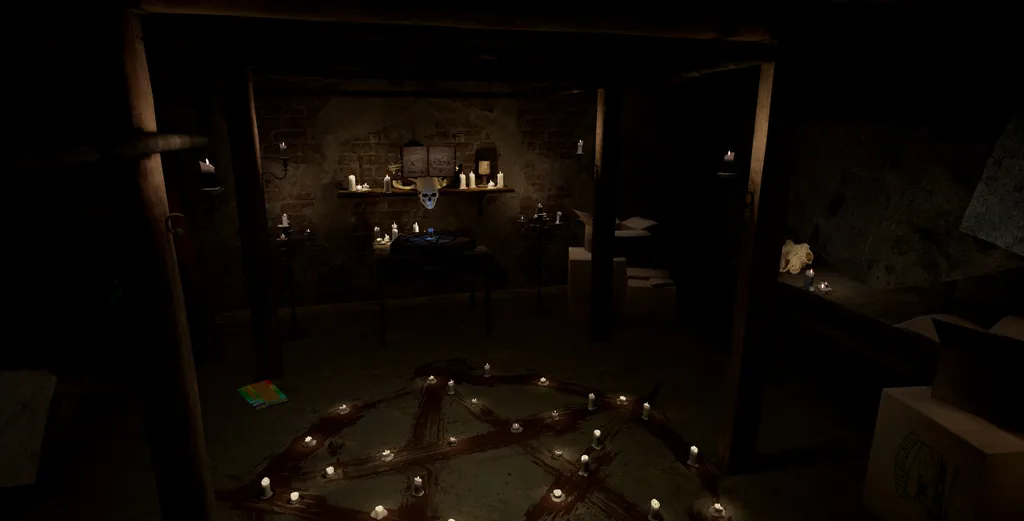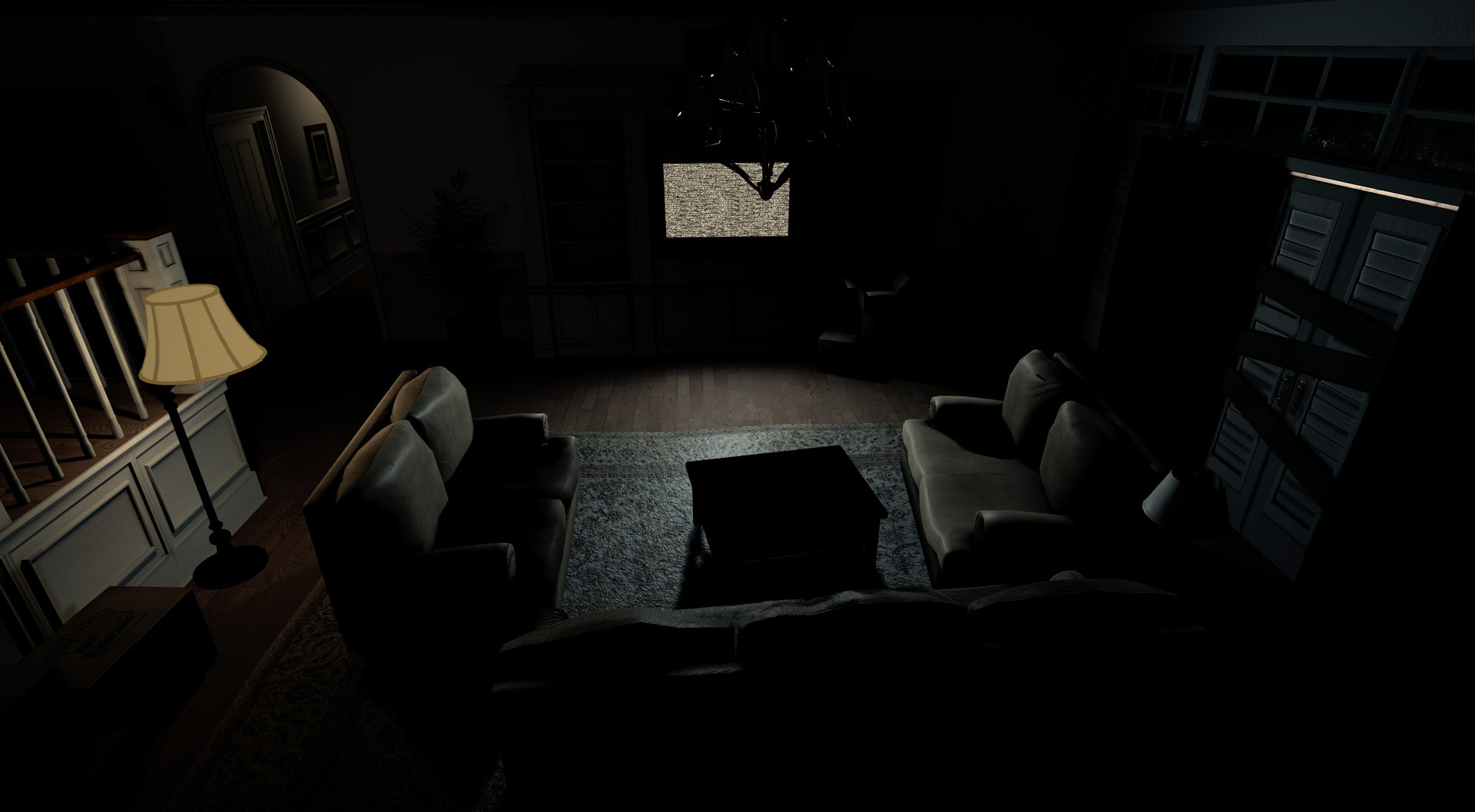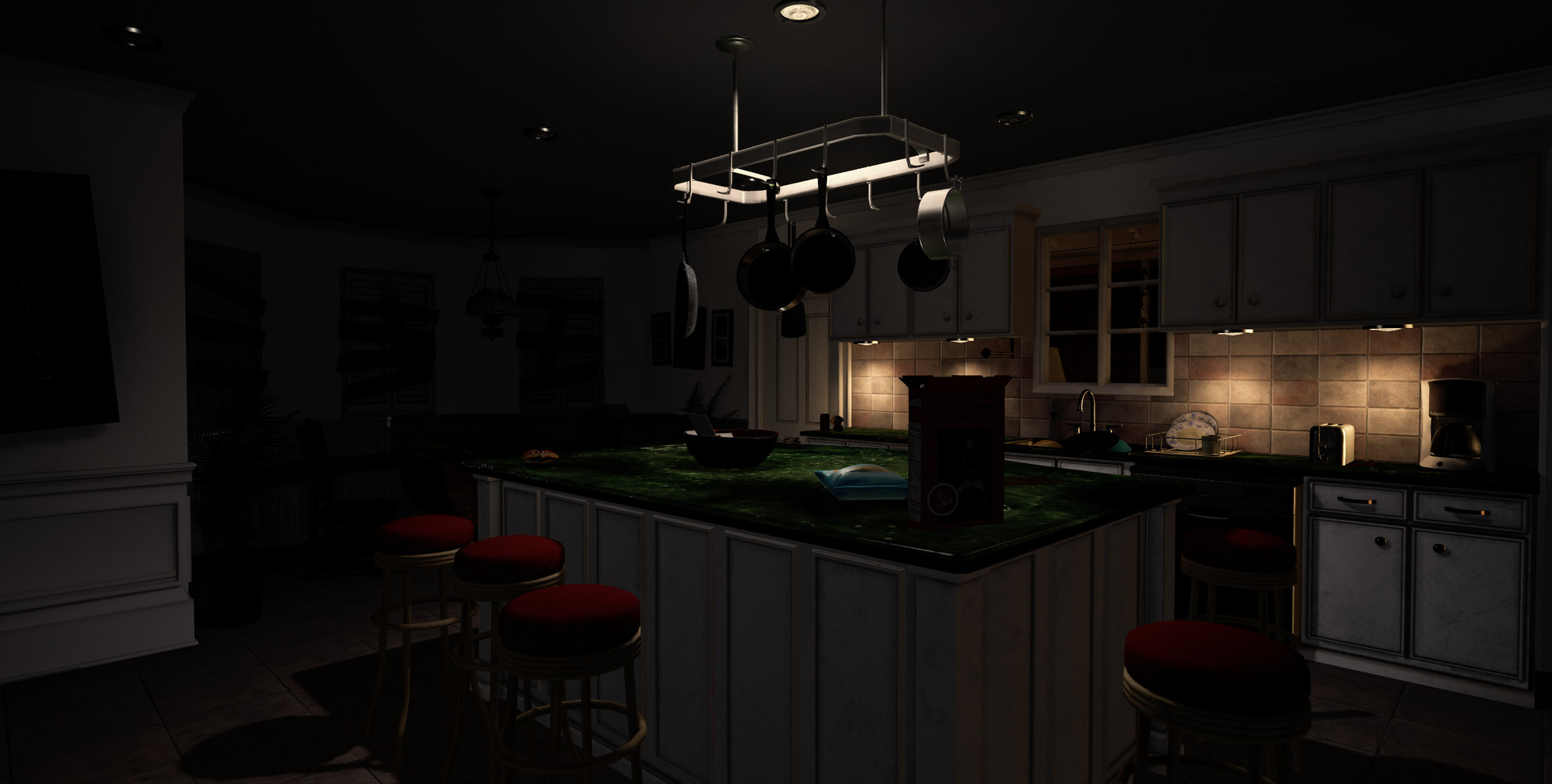I’m a huge fan of the Paranormal Activity movie franchise (especially the first two films) and have always enjoyed mustering up the courage to play horror games. With the genre now existing in VR headsets the terror experienced from playing has ramped up significantly. Instead of just watching my character get murdered on-screen in the most gruesome ways I get to experience those things for myself. I slowly walk down hallways, look around corners, and fight for my life. All of that is elevated even further with amazing sound design and 360 audio in VR.
Naturally, a VR horror game that carries the Paranormal Activity brand name has a lot of expectations. The films were founded on the Blair Witch-style found-footage premise of video cameras, webcams, and stationary security cameras recording all of the shots and piecing together the story. It’s a clever concept that did a great job of selling the believability of it all. As a result I was a bit disappointed when I discovered Paranormal Activity: The Lost Soul eschewed this concept entirely in favor of relatively traditional first-person gameplay.
The decision makes sense from a gameplay perspective, but the end result doesn’t really feel like a Paranormal Activity experience and is instead just a relatively standard demonic possession/ghost story. Luckily it mostly delivers on its promises to scare you and immerse you in a dark, twisted nightmare.
The game starts with you all alone in a typical suburban house and a flashlight. The feeling of being surrounded by darkness is strong and unsettling. The loose story unfolds over the course of about an hour and a half or two hours as you solve puzzles, look for key items, and uncover secrets. That’s really the entire game. Mechanically it’s basically a scavenger hunt with demonic undertones and a varied assortment of jump scares.
In Paranormal Activity VR there is an adaptive scare system that actually places the jump scares, some items, and a few other elements organically through the house as you explore. What this means is that each time you play it or each time someone new plays it, they won’t be scared the same way twice. That room you walked in that had a figure pop out and make you jump? It might be totally innocent for your friend that plays after you. Although, this does mean that it’s possible to be inundated with too many jump scares, making them as a whole less frightening, or you could even have too few, making the game feel a bit empty. It’s a roll of the dice and it would have been nice to have more visibility in how the scares are actually produced and calculated.
The result is a unique experience for each player. This is a great way to develop a horror game and helps alleviate one of the biggest issues with linear horror games. Since the house is so large and open, reminiscent of the manor in Resident Evil 7, players are free to roam on their own and discover different puzzles and scares as they play.
Since Paranormal Activity involves so much exploration, searching, and back-tracking, movement is a huge part of the game. However, it never really felt comfortable for me. I don’t ever experience VR sickness but even Paranormal Activity made me wobble a bit while standing — even when playing roomscale on HTC Vive. And on PSVR the movement system is barely acceptable.
While playing you need both PlayStation Move controllers in your hands. This means no DualShock 4 support and no analog sticks at all. Instead, you move by pressing the actual face buttons on the controllers. It’s certainly better than the tilting “tank” movement of Loading Human but still is a far cry from something comparable to Rift or Vive. In fact, I’d wager that playing with a DualShock 4 and just getting rid of motion controls entirely in favor of pressing the shoulder buttons to grab things would have been preferable.
While exploring the house you’ll have to spend a lot of time checking drawers, refrigerators, and more as you search for items. The result is spending a surprising amount of time just trying to find objects that you can interact with and it’s never very clear which ones those are. On the flip side of that there are tons of small objects and random bits and bobs that can be picked up and inspected that have no relevance to the game’s story or puzzles at all.
It feels like a bit of an unfinished limbo in that regard. The developers wanted everything to feel like it could be touched and interacted with so it was a believable world, but they didn’t have the time to fully realize that. The visual style is quite realistic and there’s great use of lights, shadows, and sounds, so overall the illusion of realism is quite strong.
Just as things really start to click and I can feel the intensity ratcheting up, it’s over. Most people will finish the game in about two hours and even though you could play it again with a bit of differences due to the adaptive scares, it’s largely the same game. For a title that was in Early Access on Steam since earlier this year and has been playable at events for quite some time, I was hoping for a bit more. It’s a good length and can be finished in a single sitting, but after the likes of Resident Evil 7, it’s hard not to wish for more robust VR horror experiences from modern titles.
Paranormal Activity: The Lost Soul is a relatively solid VR horror game. There is a strong foreboding sense of terror, a thickly developed atmosphere, and excellent use of sound and lighting to convey a real sense of fear. The adaptive scare system also works well, for the most part, and keeps you guessing. However the poor control system, occasional bugs (which will likely be addressed soon with patches,) short length, and inconsistent pacing keep it from being as successful as it could have been.
Paranormal Activity: The Lost Soul is now available on PSN for PlayStation VR (PSVR) and Steam with official support for both Rift and Vive – it costs $39.99 on both stores, but is currently on sale for launch with a 25% discount. Check out these official review guidelines to find out more about our process.




























